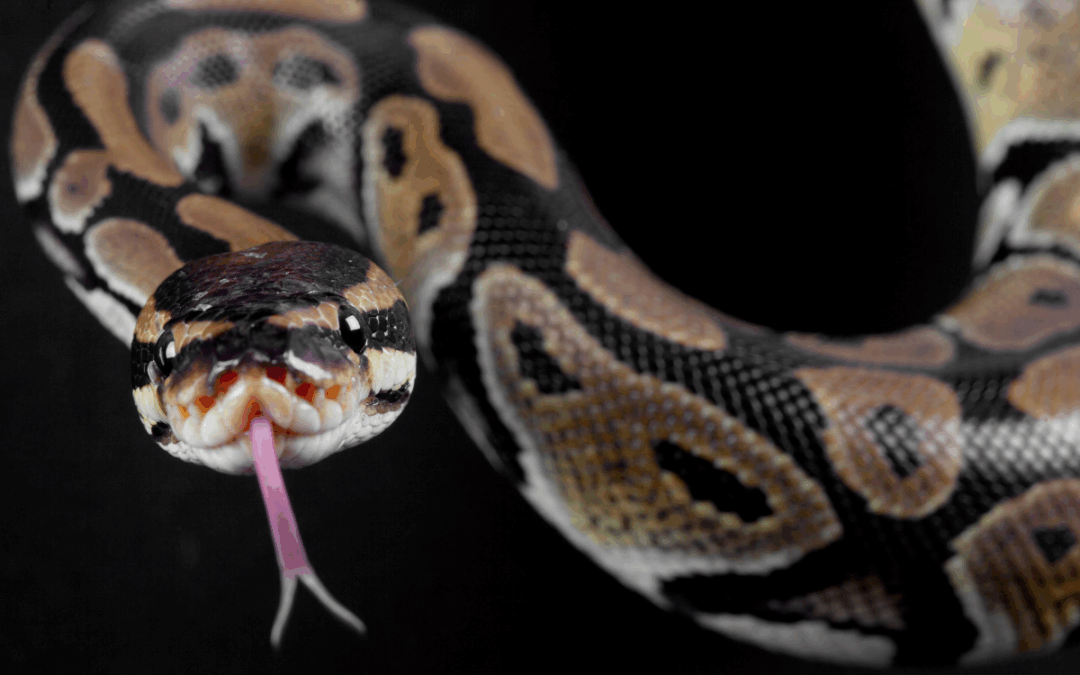
Nov 20, 2025 | Florida Snake Control
As fall brings milder temperatures to Miami, residents often take the opportunity to spend more time outdoors. However, this seasonal change also affects the behavior of local wildlife, including snakes. An unexpected encounter with a snake in your yard or near your home can be alarming. Understanding their habits is key to coexisting and minimizing unwanted interactions. This guide provides essential information on why you might see more snakes during the fall in Miami and offers practical, effective strategies for keeping your property secure. A proactive approach to wildlife management is the foundation of effective snake prevention in Miami.
Understanding Snake Behavior in the Fall
Snakes are cold-blooded, meaning their body temperature is regulated by their environment. In Miami’s climate, they remain active for much of the year, but their behavior shifts with the seasons.
Seeking Shelter and Warmth
As temperatures begin to cool, even slightly, snakes will actively seek warm, sheltered places. They may bask on sun-warmed pavement, rocks, or patios during the day. As evening approaches, they look for secure hiding spots that retain heat, such as under debris, in dense vegetation, or within burrows. Unfortunately, crawl spaces, sheds, and gaps in a home’s foundation can also provide this same sense of security.
Hunting for Food
The fall is also a time when many of a snake’s prey—rodents, lizards, and frogs—are actively preparing for winter. Snakes will follow these food sources, which can lead them directly to residential properties where these smaller animals are often abundant.
Common Snakes in Miami and Potential Risks
While the majority of Florida’s native snakes are non-venomous and beneficial to the ecosystem, it is vital to be aware of the few venomous species in our area.
- Non-Venomous Snakes: Species like the Black Racer, Garter Snake, and various water snakes are common and harmless. They play a crucial role in controlling rodent and insect populations.
- Venomous Snakes: Residents should be able to recognize potentially dangerous snakes. In South Florida, these include the Eastern Diamondback Rattlesnake, the Dusky Pygmy Rattlesnake, the Cottonmouth (or Water Moccasin), and the Coral Snake. These species typically avoid human contact but will bite if they feel threatened or cornered.
Given the potential risks, treating any unidentified snake with caution is the most responsible course of action.
Proven Strategies for Snake Prevention in Miami
The most reliable way to keep snakes off your property is to make your yard less attractive to them and their prey. Effective wildlife management focuses on habitat modification.
Eliminate Food Sources and Shelter
By removing the resources snakes rely on, you encourage them to move elsewhere.
- Maintain Your Landscape: Keep your lawn mowed and trim back dense shrubs and overgrown vegetation, especially around the foundation of your home. This reduces hiding spots for snakes and the pests they hunt.
- Remove Debris: Clear away woodpiles, leaf litter, rock piles, and any unused equipment from your yard. These create ideal harborage for snakes and rodents. Store firewood on a raised rack away from the house.
- Secure Trash Bins: Use trash cans with tight-fitting lids to avoid attracting rodents, which are a primary food source for many snakes.
Secure Your Home’s Exterior
Prevent snakes from entering your home by sealing potential access points. This is a critical component of snake prevention in Miami.
- Inspect and Seal: Thoroughly examine your home’s foundation, walls, and areas around pipes and vents for any cracks or holes. Seal these openings with durable materials.
- Check Doors and Vents: Install screens on crawl space vents and ensure weather stripping on doors creates a tight seal.
By implementing these habitat modifications, you can significantly reduce the likelihood of encountering snakes on your property.
While these preventative measures can make a big difference, some situations are best left to the professionals—especially when venomous snakes are involved. A professional snake removal service can help keep snakes from inhabiting your property, reducing the risk of encounters.
If you are dealing with a persistent snake issue or feel in harm’s way, contact a certified snake control professional. An expert can identify and remove the animal, as well as provide a comprehensive property assessment to identify and resolve underlying issues contributing to the problem.
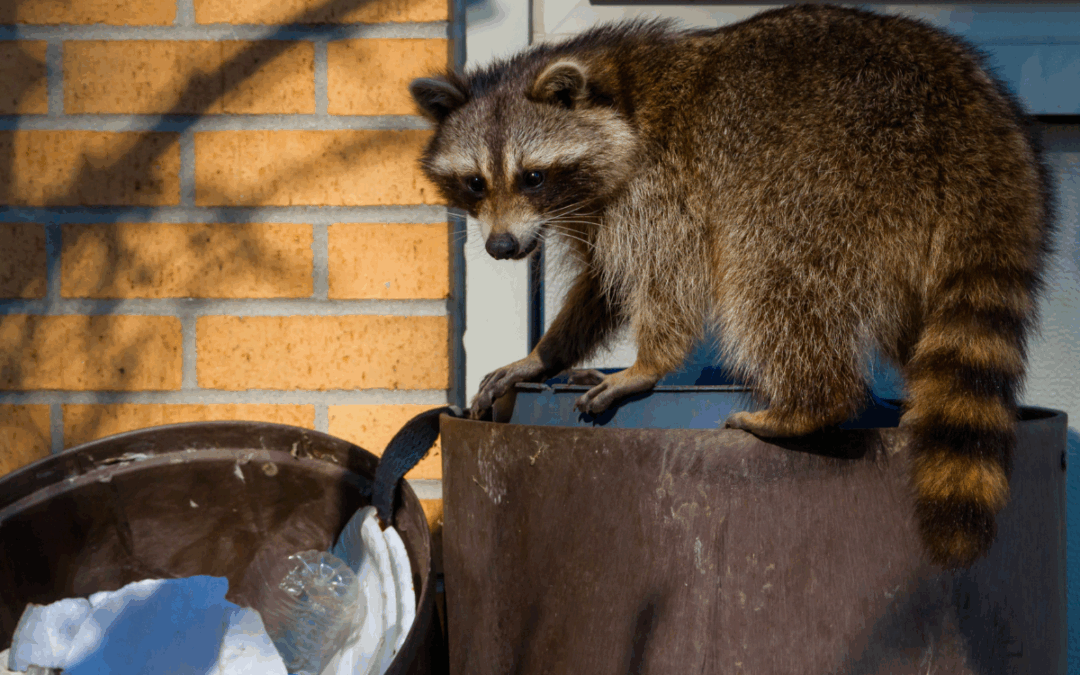
Aug 4, 2025 | Wildlife
Atlanta’s heat and humidity don’t just bring out the bugs—they also drive wildlife indoors. During August, attics become a popular hideout for animals escaping the heat. While it may seem minor at first, these attic invaders can cause serious damage and health concerns for homeowners. Here are three common attic invaders in the Atlanta area, what attracts them, and how to keep them out.
Common Attic Invaders in Atlanta
1. Squirrels
Why They’re There:
Squirrels are agile climbers and often enter attics through roof gaps, vents, or loose shingles. During hot months, they look for shaded, quiet areas to build nests.
What They Cause:
Chewed wires and wood, increasing fire risk and structural damage
Nests made with attic insulation, leading to reduced energy efficiency
Droppings that create odors and spread bacteria
Prevention Tips:
- Trim tree limbs near your roof
- Seal entry points with metal mesh or caulk
- Keep outdoor garbage and food sources secured
2. Raccoons
Why They’re There:
Raccoons are persistent and strong. They can tear through soffits or siding to get into attics, especially when looking for shelter or food.
What They Cause:
- Torn insulation, broken ductwork, and structural damage
- Contaminated areas due to droppings and urine
- Health risks from parasites and diseases like rabies
Prevention Tips:
- Install approved chimney cover device
- Remove outdoor attractants like pet food and bird feeders
- Check the roof regularly for loose or damaged spots
3. Bats
Why They’re There:
Bats can squeeze through cracks as small as 3/8 inch and often roost in attics to raise their young.
What They Cause:
- Accumulated guano, which damages insulation and structures
- Strong ammonia-like odors and increased mold risk
- Health concerns such as histoplasmosis and rabies exposure
Prevention Tips:
- Seal small gaps around vents, siding, and chimneys
- Use bat exclusion devices that allow exit without return
- Avoid handling bats, as they are protected under federal law
Tips to Keep Wildlife Out
A proactive approach can help reduce the chance of animals entering your attic:
- Seal entry points throughout your home’s exterior
- Remove food sources from your yard and outdoor spaces
- Keep vegetation trimmed and yard clutter to a minimum
- Inspect your attic for droppings, sounds, or nesting signs
When to Call Wildlife Control Experts
If animals have moved into your attic, it’s best to bring in trained professionals. Wildlife can be unpredictable, and improper handling can lead to further damage—or violations of federal wildlife laws.
- What wildlife control professionals provide: Animal removal tailored to species and situation
- Repair of damage and sealing of entry points
- Guidance to help prevent future infestations
Protect Your Home from Wildlife This Summer
Squirrels, raccoons, and bats can all find their way into Atlanta homes during the summer. With the right steps and support, you can keep wildlife out and maintain the comfort of your home.
Reach out to a trusted local wildlife control team to inspect, remove, and help prevent future problems.
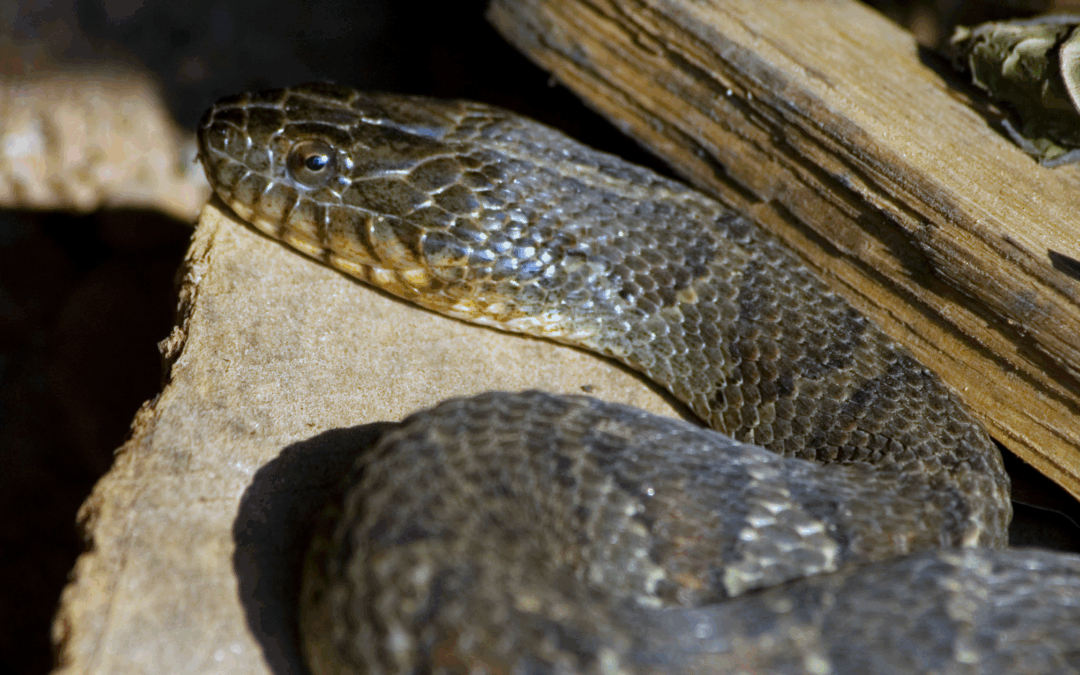
Jul 21, 2025 | Snake Control
Tennessee’s picturesque landscapes are a joy to live in, filled with rolling hills, lush greenery, and thriving wildlife. But with all this natural beauty comes one thing every homeowner dreads encountering too close to home: snakes. While most snakes you’ll find here are harmless and even beneficial as natural pest controllers, you probably don’t want them turning your home into their habitat. Fortunately, there are simple, effective ways to keep snakes out of your living spaces. Follow these practical tips to snake-proof your Tennessee home and enjoy peace of mind.
How To Snake-Proof Your Tennessee Home
Seal the Gaps
Snakes are experts at finding their way inside through even the smallest openings. Cracks as narrow as a quarter inch can become their point of entry, so it’s crucial to inspect your home and seal gaps thoroughly.
How to Snake-Proof Your Home’s Exterior
- Inspect Exterior Walls and Foundations: Conduct a detailed walk-around, looking closely at cracks in the foundation, walls, and even utility line entry points.
- Use Caulk or Weatherproof Sealants: For small gaps and cracks, seal them up with caulk or silicone-based products to create a pest-proof seal.
- Install Door Sweeps: If light shines through beneath your doors, that’s likely a big enough space for a snake. Install rubber door sweeps under exterior doors to block their path.
- Cover Vents with Screens: Many homes have attic vents and crawlspace openings. Use fine-mesh wire screens to cover these areas while keeping ventilation intact.
Securing these entry points doesn’t just deter snakes; it also prevents insects and rodents from getting inside.
Tidy Up the Yard
Your yard can unintentionally invite snakes if it offers prime hiding spots. Snakes are drawn to areas where they can safely rest and hunt prey. Keeping your outdoor space tidy goes a long way toward making your property unappealing to these slithering creatures.
Yard Maintenance Tips
- Keep Grass Trimmed: Tall grass gives snakes plenty of cover to move around unseen. Mow your lawn frequently, especially near your home’s foundation and fences.
- Clear Woodpiles and Debris: Firewood and leaf piles are warm, sheltered spots snakes love to hide in. Store firewood at least 12 inches off the ground and keep it far from the house. Remove leaves, rocks, and other debris regularly.
- Trim Plants and Bushes: Dense shrubbery close to your home can create a perfect hiding place. Maintain a well-trimmed yard and ensure there’s a clear gap between plants and your home’s walls.
- Avoid Ground-Level Clutter: Tarps, discarded materials, or even outdoor toys lying around make for inviting snake shelters. Stow items neatly in sheds or off the ground.
A clutter-free and well-maintained yard sends a clear message to snakes that they won’t find a cozy home here.
Steps to Deter Prey
- Rodent Control: Snakes love to feast on mice and rats. Look for signs of rodent activity (gnaw marks, droppings) and eliminate infestations promptly using traps or professional rodent control services.
- Secure Trash Bins: Rats and other pests scavenging through open garbage can attract snakes. Use tightly sealed lids on trash bins.
- Avoid Leaving Pet Food Outdoors: Pet kibble left outside overnight can attract both rodents and snakes. Feed pets indoors or pick up food bowls promptly.
- Eliminate Standing Water: Stagnant water in gutters, flowerpots, or birdbaths attracts both insects and amphibians, which snakes prey on. Regularly empty or fix areas where water collects.
Reducing the food supply makes your property far less appealing for hungry snakes.
Secure Sheds, Garages, and Crawlspaces
Cool, dark spaces like garages, sheds, and crawlspaces are highly attractive to snakes. Without proper precautions, these areas can become their go-to hideaways.
Tips to Snake-Proof Storage Areas
- Close Gaps Around Doors: Like your home’s main doors, garage and shed doors can have gaps underneath. Install new weather-sealing strips to block them.
- Screen Openings: Cover crawlspace vents, attic openings, and other access points with durable wire mesh screens to keep larger pests out while retaining airflow.
- Declutter Storage Areas: Avoid clutter in sheds and garages. If items are stored on the floor, consider using shelves to keep them elevated and reduce hiding places.
- Keep Doors Shut: Make it a habit to close garage or shed doors when not in use. Leaving them open, even briefly, can invite snakes to slip inside unnoticed.
Regular inspections of these areas can help catch any issues before they escalate.
Keep Snakes Out—and Peace of Mind In
Snake-proofing your Tennessee home doesn’t have to be overwhelming. Simple steps like sealing entry points, clearing yard clutter, removing food sources, and securing storage areas can make a big difference. And if snakes keep showing up, calling a wildlife services or pest control company near you can give you the expert support—and peace of mind—you need.
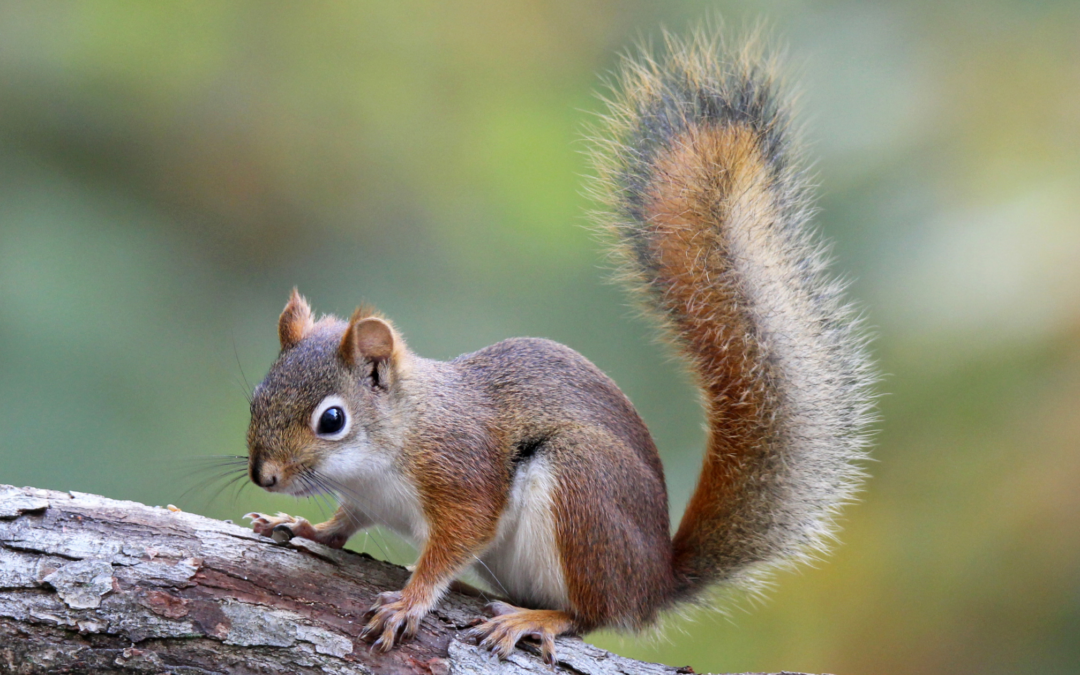
Dec 13, 2024 | Wildlife
As temperatures drop in Georgia, wild animals, particularly squirrels, begin seeking shelter from the cold. While their playful antics can be enjoyable to watch in your yard, squirrels can quickly turn into a wildlife problem when they invade your home. Understanding why squirrels become problematic in the winter, how they gain access to your home, and wildlife control methods you can use to eliminate them can help you stay one step ahead of these resourceful rodents.
Winter Wildlife Control
Why Squirrels Cause Problems in Winter
Squirrels are among the most active wild animals during winter, despite the cold. Unlike hibernating species, they remain awake and spend much of their time foraging for food and securing warm places to nest. Unfortunately, this often leads them to target homes as their winter havens.
When squirrels enter your home, they can cause significant damage, including:
- Chewing on electrical wires: This increases the risk of electrical fires.
- Gnawing on wood and insulation: This compromises the structural integrity of your home.
- Contaminating spaces with urine and droppings: This poses health risks to your family.
- Nesting materials accumulation: These can block vents and other important systems in your home.
Squirrels can reproduce quickly, and what begins as a small wildlife problem can escalate into a major nuisance wildlife control challenge if not addressed promptly.
How Squirrels Get Into Your Home
Squirrels are agile climbers and excellent chewers, making it easy for them to find entry points into your home. Common ways they gain access include:
- Roof Damage: Loose shingles, gaps near vents, or damaged soffits provide easy access.
- Chimneys: Uncovered or damaged chimneys are like open invitations.
- Attic Vents: Squirrels can gnaw through weak or damaged vent covers.
- Gaps Around Windows or Doors: Small cracks or gaps are often big enough for squirrels to squeeze through.
- Overhanging Trees: Branches that touch or hang close to your roof act as bridges for squirrels.
Once inside, they quickly make themselves at home, chewing and nesting in attics, crawlspaces, and even walls.
Preventing a Squirrel Infestation
Stopping a squirrel infestation before it starts is key to avoiding costly damage. Here are some effective prevention tips:
- Seal Entry Points
Inspect your home for potential entry points, including roof vents, chimneys, and gaps in siding. Use materials like metal mesh or heavy-duty caulk to block these areas. Consider installing a chimney cap to prevent access.
- Trim Tree Branches
Keep trees trimmed at least 6-8 feet away from your home to limit squirrels’ ability to jump onto your roof.
- Secure Food Sources
Remove bird feeders or use squirrel-proof designs to avoid attracting them to your yard. Additionally, keep outdoor trash cans sealed tightly.
- Maintain Your Attic
Regularly inspect your attic for signs of wildlife problems, such as droppings, gnaw marks, or nesting materials.
- Call a Professional Wildlife Control Company
If you notice squirrels attempting to gain access to your home or find signs of an infestation, it’s crucial to act quickly. Professional wildlife control services can safely and effectively remove nuisance wildlife and seal entry points to prevent reentry.
Why Choose Professional Wildlife Removal
While DIY methods may seem appealing, handling wild animals can be dangerous and ineffective if not done properly. A professional wildlife control company has the tools, experience, and knowledge to:
- Identify all entry points and vulnerable areas.
- Safely remove squirrels and other nuisance wildlife without harming them.
- Provide long-term prevention solutions, such as exclusion work.
- Offer peace of mind that your home is safe from future infestations.
Trust Local Experts in Wildlife Control
If you’re searching for “wildlife control near me” in Georgia, look no further than a trusted local wildlife control service. Protect your home and family from the risks of squirrels and other wild animals this winter by enlisting the help of experienced professionals.
Don’t let squirrels make your home their winter retreat. Contact a professional wildlife control company today to schedule an inspection and ensure your home stays safe and secure all season long.
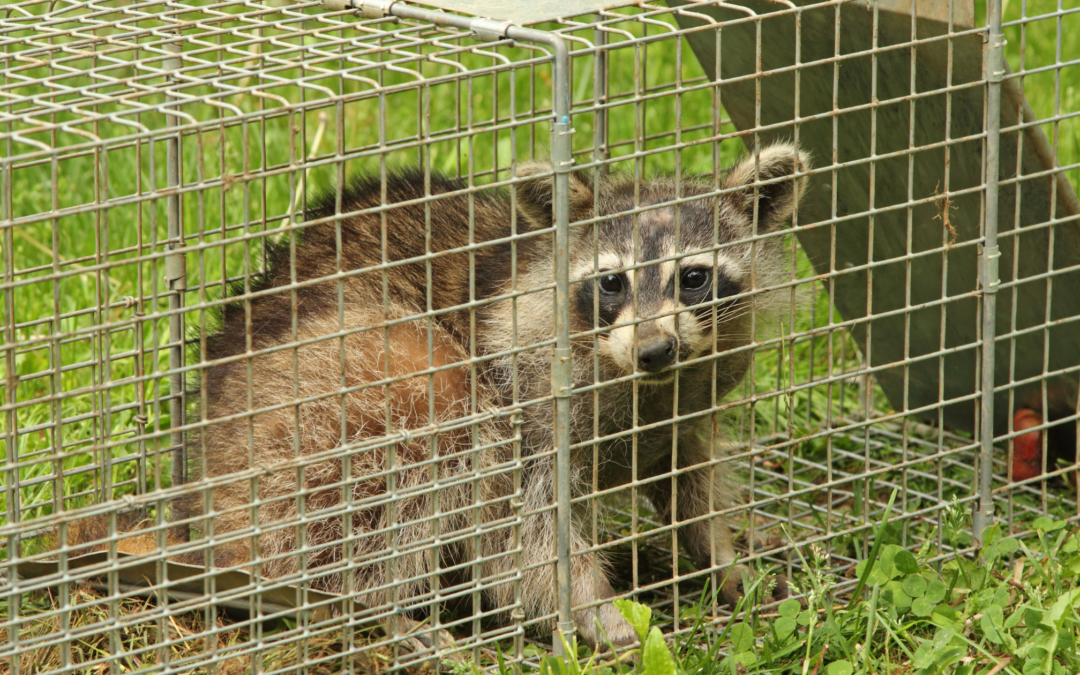
Sep 6, 2024 | Wildlife
Raccoons, with their curious nature and dexterous paws, are common in Georgia. While these animals can seem harmless, they can cause significant damage to property and pose health risks to humans. If you’re dealing with a raccoon problem, knowing how to trap them safely is essential. One of the key components to successful raccoon trapping is using the right bait. In this blog, we’ll discuss what raccoons like to eat, the dangers they pose, the best baits for raccoon traps, and how to prevent these clever critters from returning.
What Do Raccoons Like to Eat?
Raccoons are omnivores with a varied diet. They have a keen sense of smell, which helps them find food in both natural and urban environments. Common foods that attract raccoons include:
- Fruits: Grapes, apples, peaches, and berries are irresistible to raccoons.
- Vegetables: Corn and peas are common raccoon favorites.
- Nuts and Seeds: Raccoons enjoy munching on nuts, including peanuts and sunflower seeds.
- Insects and Small Animals: In the wild, raccoons will eat insects, frogs, and small rodents.
- Human Food: Raccoons are notorious for scavenging through trash bins. Leftover meats, pizza, and bread are particularly appealing.
When baiting a raccoon trap, you’ll want to use food that will entice them into the trap while also ensuring that it’s positioned correctly to trigger the mechanism.
The Dangers Raccoons Pose to Humans and Property
Though raccoons may appear cute, they can be quite destructive when they enter human spaces. Below are some of the dangers they pose:
- Property Damage: Raccoons are excellent climbers and can easily find their way into attics, chimneys, and crawl spaces. Once inside, they can tear up insulation, damage wiring, and create nests, leading to costly repairs.
- Health Risks: Raccoons carry diseases that are transmissible to humans and pets, including rabies and leptospirosis. Additionally, their feces may contain roundworm eggs, which pose a serious health hazard if inhaled or ingested.
- Attacks on Pets: While raccoons tend to avoid confrontation, they can become aggressive if cornered or threatened. Small pets, particularly cats and small dogs, may be at risk of injury during encounters with raccoons.
The Best Bait for a Raccoon Trap
Choosing the right bait is crucial for successfully trapping a raccoon. The best bait will be something with a strong smell that appeals to their omnivorous palate. Here are some of the most effective options:
- Marshmallows: Surprisingly, raccoons are highly attracted to sweet foods, and marshmallows make excellent bait. They are inexpensive, easy to handle, and have a strong sugary smell that raccoons love.
- Peanut Butter: Peanut butter is a go-to bait for many wildlife trappers. Its thick consistency and strong aroma make it an excellent option for raccoon traps. You can smear it on the trigger plate of the trap or pair it with other foods like bread or crackers.
- Canned Sardines or Tuna: Raccoons are attracted to the pungent smell of fish. Canned sardines or tuna are highly effective in drawing them into traps. Place the can in the back of the trap to ensure they step on the trigger plate as they reach for the food.
- Cat or Dog Food: Many people use canned cat or dog food as bait. The strong smell and ease of accessibility make it a practical choice. However, keep in mind that this bait may also attract other animals, such as stray cats or dogs.
- Fresh Fruit: Grapes, apples, and bananas are popular choices when it comes to raccoon bait. Their strong, sweet fragrance is a great lure, especially when placed near the back of the trap.
How to Trap a Raccoon Safely
When using a raccoon trap, it’s important to follow safety guidelines. Here are a few tips for effective trapping:
- Choose the Right Trap: Opt for a live trap that is large enough to contain an adult raccoon but small enough to prevent injury. Traps that measure 32 to 36 inches in length are typically ideal for raccoons.
- Place the Trap Strategically: Place the trap near areas where raccoon activity is most noticeable, such as near garbage bins, gardens, or attics. Ensure that the trap is stable and won’t tip over when the raccoon enters.
- Check the Trap Regularly: Once the trap is set, check it frequently. Leaving a raccoon trapped for extended periods can be stressful for the animal and may increase the risk of injury.
How to Get Rid of Raccoons After Trapping
After successfully trapping a raccoon, it’s essential to handle it humanely and safely. In Georgia, there are regulations governing the release of trapped raccoons, so it’s wise to consult a professional wildlife removal company. Professionals can ensure that the raccoon is relocated to a suitable habitat away from residential areas.
Avoid handling the raccoon directly, as they can become aggressive or carry diseases. Most wildlife control companies offer relocation services as part of their raccoon removal programs, providing a humane way to get rid of raccoons.
Preventing Raccoons from Returning
Once you’ve removed the raccoons from your property, it’s essential to take steps to prevent them from coming back. Here are some effective prevention tips:
- Secure Trash Bins: Raccoons are drawn to garbage, so make sure all outdoor trash bins are securely closed with tight-fitting lids. Consider using bungee cords to secure the lids further.
- Eliminate Food Sources: Avoid leaving pet food outside overnight, and clean up any fallen fruit from trees in your yard. This will minimize potential food sources for raccoons.
- Seal Entry Points: Inspect your home for any gaps or openings that raccoons could use to enter, particularly around the roof, attic, and chimney. Use materials such as hardware cloth or metal flashing to block off these entry points.
- Install Motion-Activated Lights: Raccoons are nocturnal and prefer to operate under the cover of darkness. Installing motion-activated lights can deter them from getting too close to your home.
- Use Repellents: Some homeowners use commercial raccoon repellents or homemade solutions, such as spraying ammonia around the perimeter of their property. These strong smells can deter raccoons from returning.
Dealing with a raccoon problem can be a challenge, but with the right bait, trap, and preventive measures, you can effectively manage and remove them from your property. If you’re unsure about how to get rid of raccoons or need assistance, working with a professional wildlife control company is the safest and most efficient solution. A trained wildlife removal expert can help you trap raccoons humanely and provide ongoing prevention strategies to keep them from returning. Contact a wildlife removal service today to reclaim your property from these pesky invaders.




